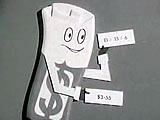What happened that day?
See historic events for any day of the year by entering the date below. Why not try your birthday?
Kiwi of the Week
Today in History

1985 Rainbow Warrior sunk in Auckland harbour
The Greenpeace ship was torn apart by two bombs planted by French secret agents. A Portuguese crew member, Fernando Pereira, was killed.
The Rainbow Warrior had been involved in protests over French nuclear testing in the Pacific. French Secret Service (DGSE) agents were sent to prevent it leaving for another protest campaign at Mururoa Atoll in the Tuamotu Archipelago. Following the attack, two DGSE officers, Dominique Prieur and Alain Mafart, were arrested on 24 July.
Having been charged with murder, both pleaded guilty to manslaughter and were sentenced to 10 years’ imprisonment. The case was a source of considerable embarrassment to the French government. While the attack was on an international organisation and not New Zealand as such, most New Zealanders did not make this distinction. The fact that it was carried out on New Zealand territory by a supposedly friendly nation caused outrage and a serious deterioration in relations between New Zealand and France.
Image: Rainbow Warrior after the bomb attack
Internal links

1967 NZ adopts decimal currency
Pounds, shillings and pence were replaced with dollars and cents − 27 million new banknotes and 165 million new coins, to be precise.
In 1963 the government decided to ‘decimalise’. Imperial currency was relatively complex: pounds were divided into 20 shillings and 240 pence, with 12 pence to the shilling. People had got used to doing the fractions, but it was complicated. The system of 100 cents to the dollar was simpler and ‘Decimal Currency’ (DC) day was set for 10 July 1967.
There was public discussion over what to call the new decimal money. ‘Kiwi’ and ‘zeal’ were proposed to avoid confusion with ‘dollar’, which most people associated with American currency. In the end, though, the word dollar was selected. ‘Mr Dollar’ became the symbol of the transition, children had the opportunity to become ‘dollar scholars’, and a jingle released in 1966 to promote the change told New Zealanders not to ‘shed a tear in July next year for cumbersome pounds and pence’.
With the changeover 5 shillings (one crown) became 50 cents, 2 shillings (one florin) became 20 cents, 1 shilling (one bob) became 10 cents, 6 pence became 5 cents, 3 pence became 2 cents and a penny became 1 cent.
The old bank notes (10s, £1, £5, £10 and £50) were replaced with dollar notes in the following denominations: 1, 2, 5, 10, 20 and 100. A $50 note was introduced in 1981, and in 1990 the $1 and $2 notes were replaced by coins. By 2010 inflation had reduced the value of a New Zealand dollar to less than 1/16th of what it was worth when it was introduced in 1967.
Image: still from decimal currency song film (Te Ara )




















